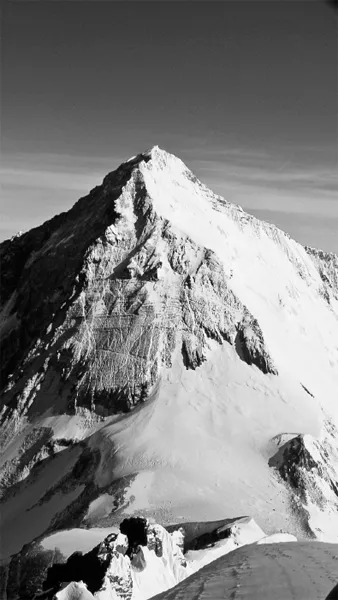![]()
PART I
PROJECT
Mount Everest—South Col to the Summit. (Greg Vernovage)
![]()
COMMIT TO THE SUMMIT
—Andrew Carnegie, founder of Carnegie Steel Company
Scaling a Quota
Two months earlier, before attacking the perils of Everest, Sue and John had faced equally daunting challenges in their business careers. Sue was at US West (now CenturyLink), a Fortune 500 telecommunications service provider, where she led the sales organization responsible for the firm’s largest Internet service provider (ISP) accounts. How, she wondered, would they overcome fierce competition, rapid market changes, and limited resources to achieve the dramatic increase in their revenue objectives—from $250 million to $300 million—that had just been mandated by senior management?
John was mulling over the future of Waechter Lufkin, LLC, the boutique investment banking firm he had cofounded four years earlier with his friend and fellow climber Andy Lufkin. The company, which specialized in providing guidance and venture capital to start-up technology companies, had enjoyed enormous success throughout the technology boom of the late 1990s. Then, just prior to the Everest expedition, the bubble burst, plunging the country into recession. John would now have to define a new vision and business strategy to maintain the growth the company had enjoyed until then. However, with Everest looming, this was a challenge that would have to wait until he returned from the mountain.
As sales professionals, we’re accustomed to high pressure and seemingly unreasonable expectations. We’re always being challenged to do more with less. We’re expected to find new clients, service existing ones, and stay current with industry trends while meeting strict deadlines. Somehow, through all this, we must also find time to have a personal life. And if you’re in a management role, as we were, you have the added responsibility of successfully building and leading a team.
Have you ever felt stymied while chasing a dream? Felt like you’ve only just started, yet the obstacles you’re encountering already seem overwhelming? “This is too difficult,” you tell yourself. “How will I ever make it happen?”
We’ve been there too. But through experience, we’ve learned that anyone can overcome seemingly insurmountable obstacles and achieve their personal vision of success.
Project. Prepare. Persevere
The act of climbing a mountain has long captured the human imagination as a metaphor for meeting life’s challenges. On the mountain, we must overcome harsh weather and physical barriers to reach the summit. In business, sales professionals must overcome constant rejection and scarce resources to fulfill their quotas and earn financial rewards.
We’re proud to count ourselves among the elite climbers who have ascended the Seven Summits, the highest mountains on each of the seven continents. In sales too there are Seven Summits that every top performer must conquer, one for each chapter of this book.
Your journey through our Seven Summits of Sales will proceed through three distinct phases that we refer to as Project. Prepare. Persevere. This is a methodology for achieving both short- and long-term goals that will help you develop the essential skills and attitudes common to Everest summiteers and top sales performers alike. This book is divided into three parts, one for each phase.
In our first two chapters, we’ll discuss projecting your vision, setting goals, and creating action plans. In chapters 3 to 6, we’ll examine the nuts and bolts of preparing to be successful by learning about your company, products, and services, and by acquiring the in-depth market knowledge and industry expertise you’ll need to perform at the elite level. We’ll also consider how to leverage this knowledge so you can navigate effectively through the sale process.
We’ll conclude the book in chapter 7, where we’ll explore the keystone trait that every top performer possesses: perseverance. We’ll show you that perseverance is something that can be learned and perfected, like any other skill. And we’ll provide practical methods you can use to ignite your passion and overcome any obstacle in your path to success.
For more than eight years, we fully committed ourselves to achieving our vision of climbing the Seven Summits. We trained year-round and spent all of our annual vacations pursuing this goal with single-minded determination. Along the way, our c...

